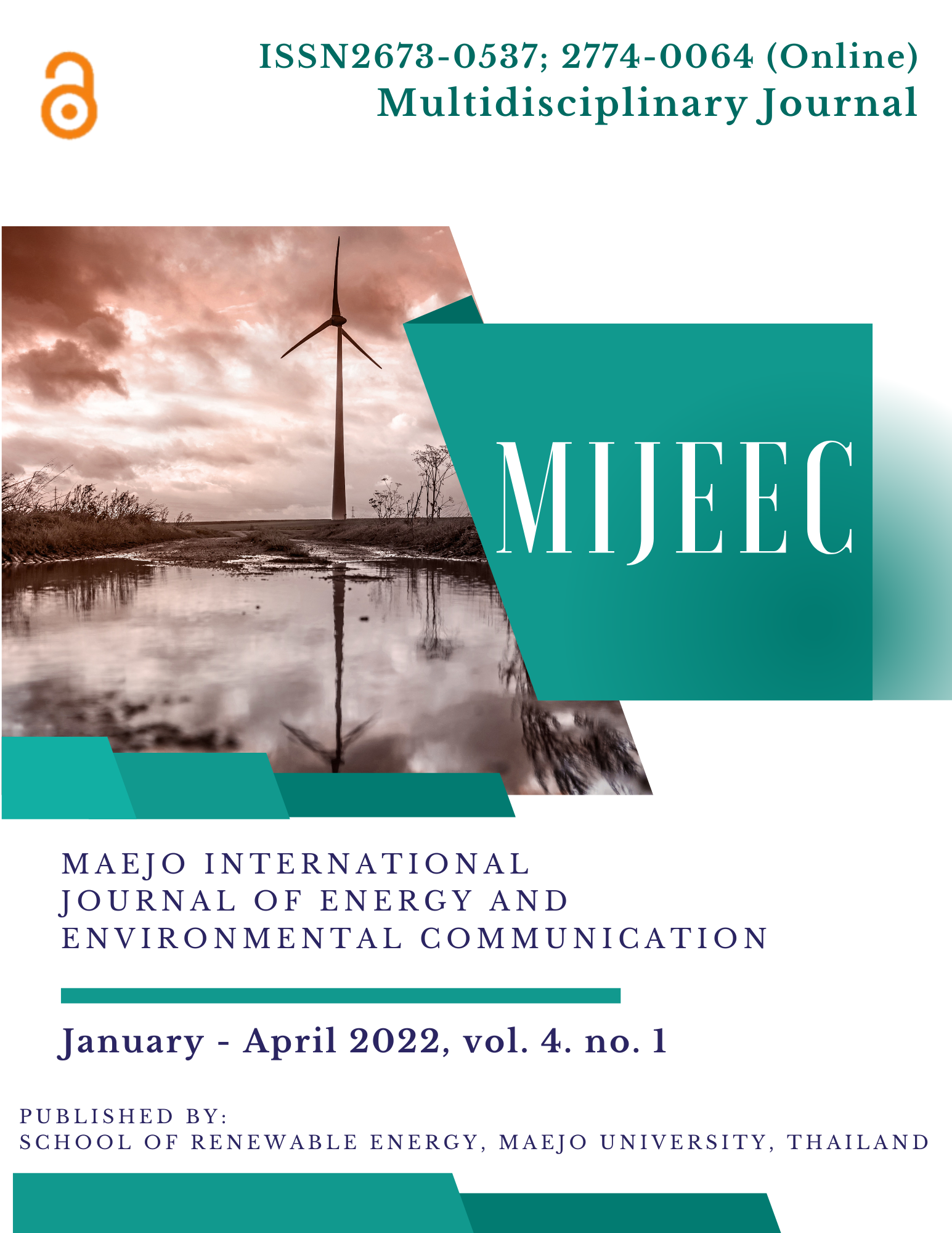Effect of agitation on extraction of phenolic compounds from ripe pericarp of Wodyetia bifurcata
Main Article Content
Abstract
In this study, the ripe pericarp extracts of Wodyetia bifurcata were prepared by solvent extraction techniques with and without agitation. The influence of agitation was examined on the extraction yield, total phenolic content (TPC), total flavonoid content (TFC) and antioxidant activity of the ripe pericarp extracts of Wodyetia bifurcata. Antioxidant capacity of extracts was evaluated by measuring the scavenging effect on 2, 2’-azinobis (3-ethylbenzothiazoline-6-sulphonic acid) (ABTS) and 2, 2’-diphenyl-1-picrylhydrazyl (DPPH) radicals. Compared to solvent extraction without agitation, solvent extraction with agitation significantly (p < 0.05) increased the extraction yield, TPC, TFC and antioxidant capacities (ABTS and DPPH) of the ripe pericarp extracts of Wodyetia bifurcata. In addition, higher agitation speed resulted in higher extraction yield, TPC, TFC and antioxidant activities (ABTS and DPPH) of the ripe pericarp extracts of Wodyetia bifurcata.
Article Details

This work is licensed under a Creative Commons Attribution 4.0 International License.
Copyright © 2019 MIJEEC - Maejo International Journal of Energy and Environmental Communication, All rights reserved. This is an open-access article distributed under the terms of the Creative Commons Attribution-NonCommercial- Attribution 4.0 International (CC BY 4.0) License
References
Alshwyeh, H. A. (2020). Phenolic profiling and antibacterial potential of Saudi Arabian native date palm (Phoenix dactylifera) cultivars. International Journal of Food Properties, 23(1), 627-638.
Dai, J., & Mumper, R. J. (2010). Plant phenolics: extraction, analysis and their antioxidant and anticancer properties. Molecules, 15(10), 7313-7352.
Das, P. R., & Eun, J. B. (2018). A comparative study of ultra-sonication and agitation extraction techniques on bioactive metabolites of green tea extract. Food Chemistry, 253, 22-29.
Donadone, S.D.B., Giombelli, C., Silva, D. L. G., Stevanato, N., da Silva, C., & Bolanho Barros, B. C. (2020). Ultrasound‐assisted extraction of phenolic compounds and soluble sugars from the stem portion of peach palm. Journal of Food Processing and Preservation, 44(9), e14636.
Dowe, J. L. (2010). Australian palms: biogeography, ecology and systematics. Csiro Publishing, Collingwood.
Hanula, M., Wyrwisz, J., Moczkowska, M., Horbańczuk, O. K., Pogorzelska-Nowicka, E., & Wierzbicka, A. (2020). Optimization of microwave and ultrasound extraction methods of açai berries in terms of highest content of phenolic compounds and antioxidant activity. Applied Sciences, 10(23), 8325.
Hegazy, A. E. (2017). Antioxidant activity of apple peel extracts prepared by different solvents. Zagazig Journal of Agricultural Research, 44(6), 2665-2671.
John, J. A., & Shahidi, F. (2019). Phenolic content, antioxidant and anti-inflammatory activities of seeds and leaves of date palm (Phoenix dactylifera L.). Journal of Food Bioactives, 5, 120-130.
Kim, H., Moon, J. Y., Kim, H., Lee, D. S., Cho, M., Choi, H. K., ... & Cho, S. K. (2010). Antioxidant and antiproliferative activities of mango (Mangifera indica L.) flesh and peel. Food Chemistry, 121(2), 429-436.
Lanjekar, K. J., & Rathod, V. K. (2021). Green extraction of glycyrrhizic acid from Glycyrrhiza glabra using choline chloride based natural deep eutectic solvents (NADESs). Process Biochemistry, 102, 22-32.
Muhamad, N., Muhmed, S. A., Yusoff, M. M., & Gimbun, J. (2014). Influence of solvent polarity and conditions on extraction of antioxidant, flavonoids and phenolic content from Averrhoa bilimbi. Journal of Food Science and Engineering, 4, 255-260.
Naderali, N., Nejat, N., Vadamalai, G., Davis, R. E., Wei, W., Harrison, N. A., ... & Zhao, Y. (2017). ‘Candidatus phytoplasma wodyetiae’, a new taxon associated with yellow decline disease of foxtail palm (Wodyetia bifurcata) in Malaysia. International journal of systematic and evolutionary microbiology, 67(10), 3765-3772.
Patil, S. S., Bhasarkar, S., & Rathod, V. K. (2019). Extraction of curcuminoids from Curcuma longa: comparative study between batch extraction and novel three phase partitioning. Preparative biochemistry and biotechnology, 49(4), 407-418.
Perez, K., Kobayashi, K., & Sako, G. (2009). Foxtail palm, Wodyetia bifurcata. Ornamentals and flower, 8-11.
Sarkar, A., & Ghosh, U. (2017). Effect of extraction temperature and technique antioxidant activity of Tamarindus indica seeds. Research Journal of Recent Sciences, 6(2), 10-15.
Sengab, A.E.B, El Dina, M. Y., Elgindi, M. R., & Elsaid, M. B. (2015). Biological studies of isolated triterpenoids and phenolic compounds identified from Wodyetia bifurcata family Arecaceae. Journal of Pharmacognosy and Phytochemistry, 3(6), 67-73.
Thoo, Y. Y., Ho, S. K., Liang, J. Y., Ho, C. W., & Tan, C. P. (2010). Effects of binary solvent extraction system, extraction time and extraction temperature on phenolic antioxidants and antioxidant capacity from mengkudu (Morinda citrifolia). Food Chemistry, 120(1), 290-295.
Wang, H., Gao, X. D., Zhou, G. C., Cai, L., & Yao, W. B. (2008). In vitro and in vivo antioxidant activity of aqueous extract from Choerospondias axillaris fruit. Food Chemistry, 106(3), 888-895.






